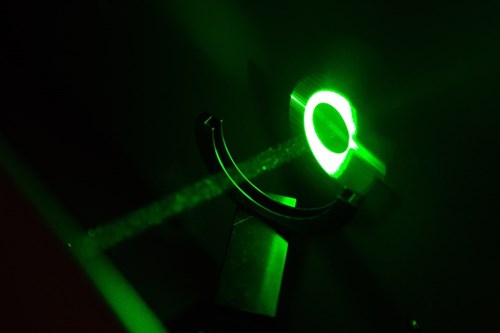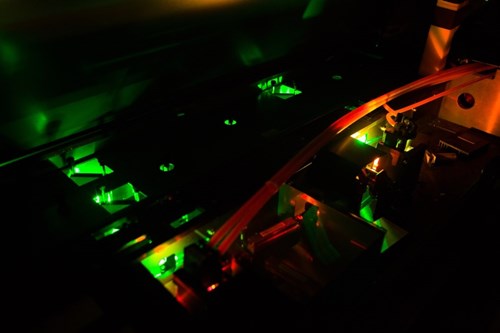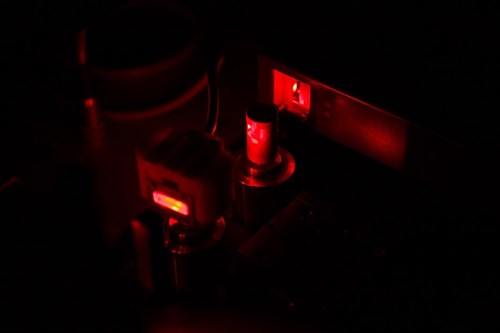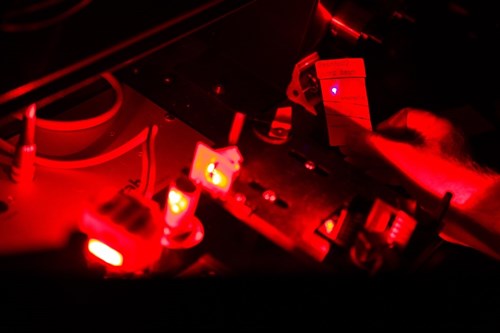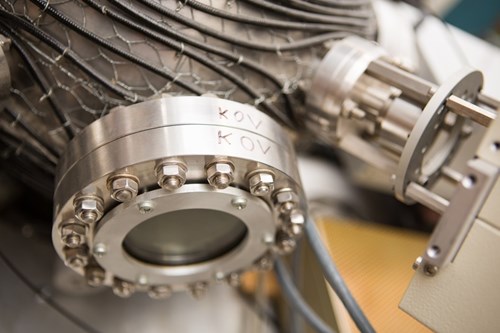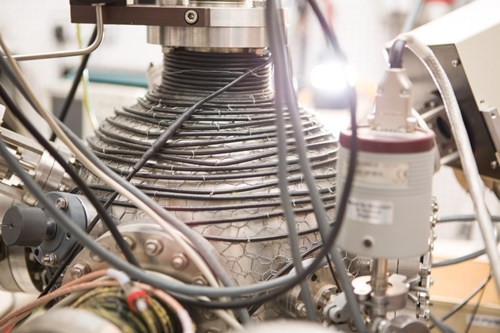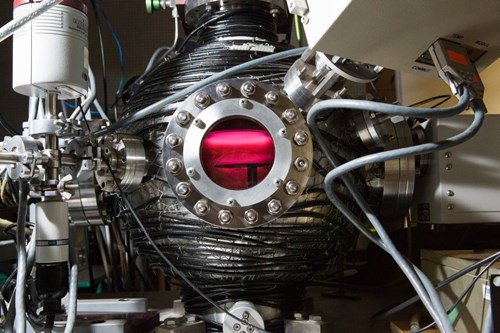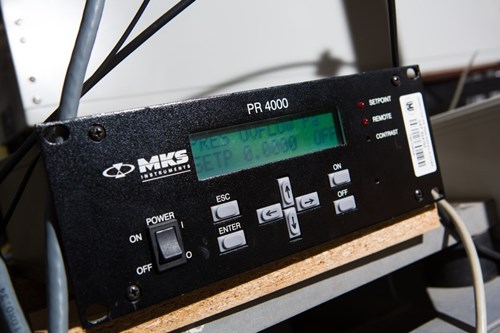Plasma diagnostic
Enhance your research with our equipment!
We offer our equipment for other scientists
All facilities and equipment can also be used by scientists and researchers outside from Masaryk University
We perform the necessary analyses for your research
Our equipment can be used to perform the required analyses and to support your research
We send you the price list on request
Are you interested in the cost and conditions of using our equipment? Do not hesitate to contact us.
Optical spectrometers
Our spectrometers offer a unique combination of drive speed, precision and high resolution.
Parameters FHR 1000 (Horiba, France):
- Focal length: 1000 mm
- Entrance aperture ratio: f/9.0
- Spectral range: 200–750 nm
- Grating size: single: 110 × 110 mm, dual: 80 mm × 110 mm
- Scanning range: 0 – 1500 nm
- Scanning speed: > 300 nm/s
- Spectral dispersion: 0.8 nm/mm
- Spectral resolution: 0.01 nm *w/ 10µm slits
- Wave length position accuracy: ± 0.03 nm
Applications:
- Composition of plasma
- Determination of vibrational/rotational temperatures
- Concentration of particles
Parameters Shamrock (Andor, England):
- Focal length: 750mm
- Entrance aperture ratio: f/9,7
- Spectral range: 200-1000nm
- Three gratings: 600lines/mm, 1200lines/mm, 2400lines/mm
- Wave length position accuracy: ± 0.03nm
- Wave length repeatability: ± 10pm
- Detectors:
- CCD DU940P-BU2 Andor
- ICCD DH340T-18F-03 Andor
Laser induced fluorescence – LIF
Laser setup with detection system for measurement of laser induced plasma fluorescence.
Parameters:
- pulsed (8 ns) tunable (200 nm - near IR) dye laser pumped with Nd:YAG laser
- detection by ICCD camera with temporal resolution 5 ns
Applications:
Measurement of concentration of reactive species (radicals, metastables), namely spatially resolved measurements of concentration of hydroxyl radicals (OH) and monoatomic oxygen radicals (by means of TALIF) in atmospheric-pressure discharges and other reactive environments.
Low-pressure diagnostics reactor for capacitive discharges
Low-pressure reactor for capacitively coupled discharges equipped with diagnostic tools.
Parameters:
pressure 0.1 Pa - 1 kPa
Accessories:
- Langmuir probe
- Mass spectrometer with energy analyser
- Equipment for optical emission spectroscopy
- Equipment for measurement of higher harmonic frequencies
Applications:
- Study of plasma processes
- Monitoring of thin film etching
- Measurement of concentration of reactive species (radicals, metastables)
- Study of nonlinear electric characteristics of plasma
Portable spectrometers
Three portable spectrometers AvaSpec-ULS-TEC (Avantes, NL) can be used either in the laboratory or outside to provide quick and accurate analysis of any radiation in range from 200 nm to 1000 nm.
Spectrometer 1:
spectral range 200 – 1000 nm, slit size: 25 µm, grid: 300 lines/mm
Spectrometer 2:
spectral range 290 – 395 nm, slit size: 10 µm, grid: 2400 lines/mm
Spectrometer 3:
spectral range 740 – 924 nm, slit size: 25 µm, grid: 1200 lines/mm
Parameters:
- Detector: CCD linear array, 3648 px, max ΔT = -35 °C versus ambient
- Time to stabilize: 4 min
- Signal/Noise 350:1
- AD converter: 16-bit, 1 MHz
- Integration time: 10 µs – 10 minutes
- Interface: USB 2.0, 480 Mbps
- Power supply 100-240 VAC, 50 W
ns-resolved intensified camera
Princeton Instruments intensified CCD Camera PI-MAX3 is unique device cappable of recording fast and/or low-light processes. It will find its applications in low-light signals studies (typical application of iCCD cameras is in the field of night-vision). I.e. in physics it will be e.g. spectroscopy, in astrophysics e.g. low-light fast events or in chemistry e.g. fluorescence. It will find its aplication in fast processes study to the greater extent. iCCD cameras enables study of physical systems such as plasma kinetics, LIF, PIV or the reaction kinetics in chemistry or LIL in nanotechnology research. This all with superb spatial resolution of 1 MP and in broad spectral range of 200 – 900 nm.
Next unique feature of this camera is its dual-image capture capability, i.e. it enables one to capture two consecutive full frame images in succession of 2 us or more. Due to this it can be used for non-periodic system dynamics – real time recording.
High repetition rate of intensifier (1 MHz) gives the ability of fast data acquisition with much better SNR – common iCCD cameras are 1-2 orders worse. High frame rate (26 fps) gives the possibility of motion-capture even in very low light conditions.
Time-correlated single photon counting – TCSPC
Time-correlated single photon counter Becker & Hickl Simple-Tau 152.
Double photon counter for independent photon counting on two optical paths with common synchronization. Time-correlated single photon counting (TCSPC) technique allows to record low-level optical signals with a high temporal resolution.
Parameters:
- Correlation time 50ns-5µs
- Time-resolution 7 ps
- Maximal counting rate 10 MHz
- Dead time 100 ns
Accessories:
- Three fast photomultipliers PMC-100 working in photon counting regime, sensitive in 185-820 nm wavelength range
Applications:
- Plasma diagnostics
- Temporally-resolved optical measurements of atmospheric-pressure discharges
Are you interested to use our equipment? Contact us.
We send the cost and conditions of using our equipment on request.


